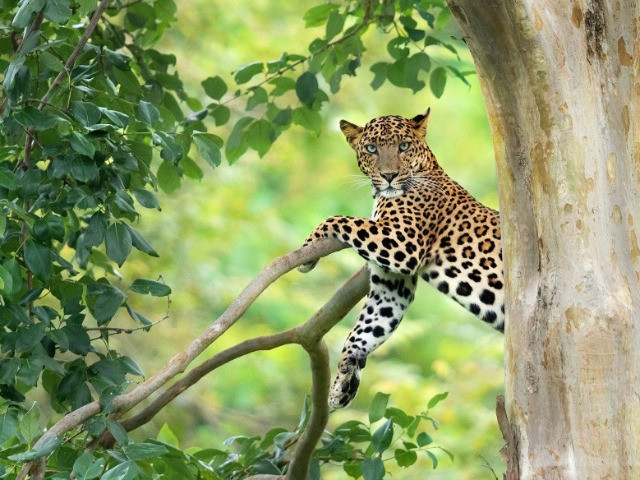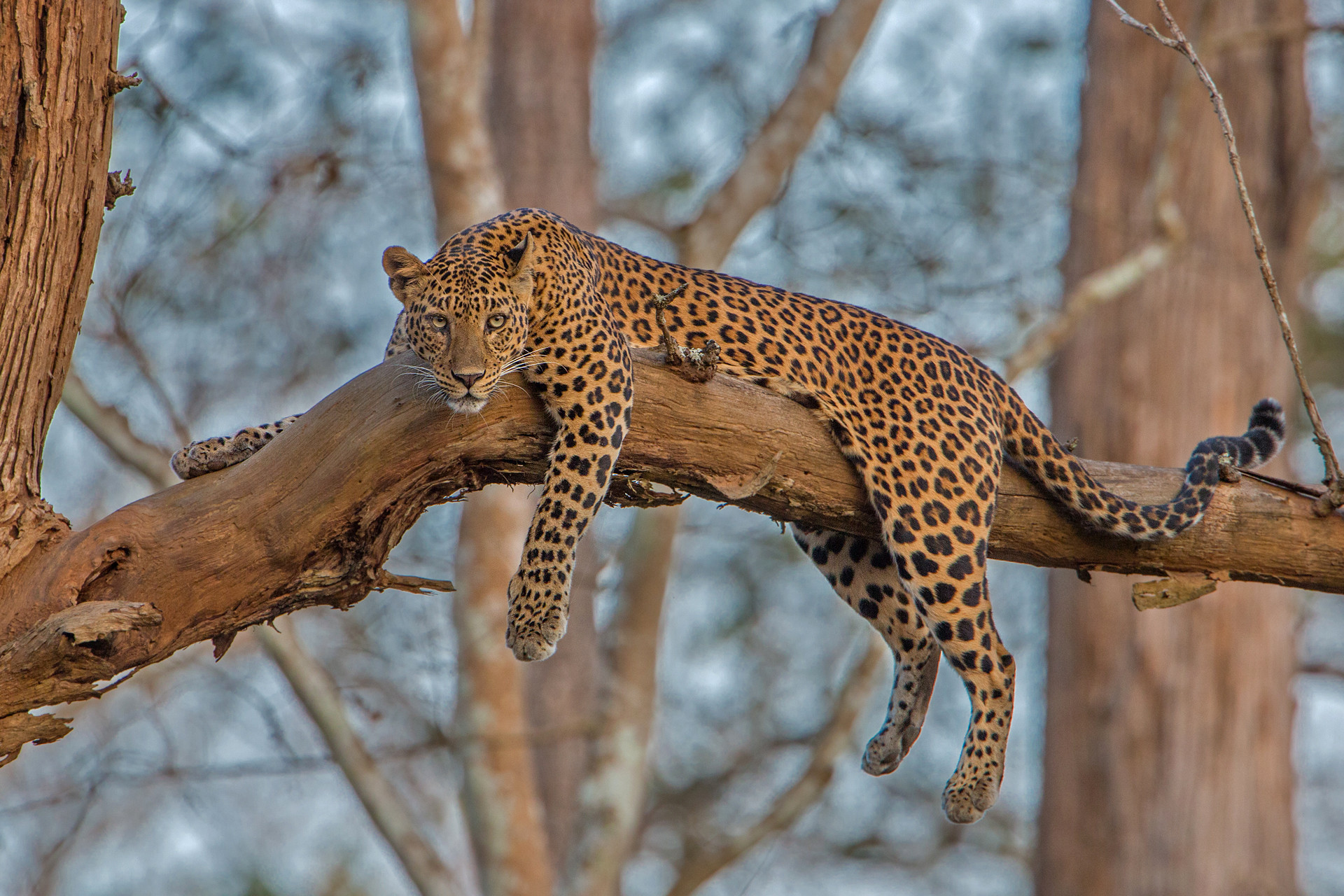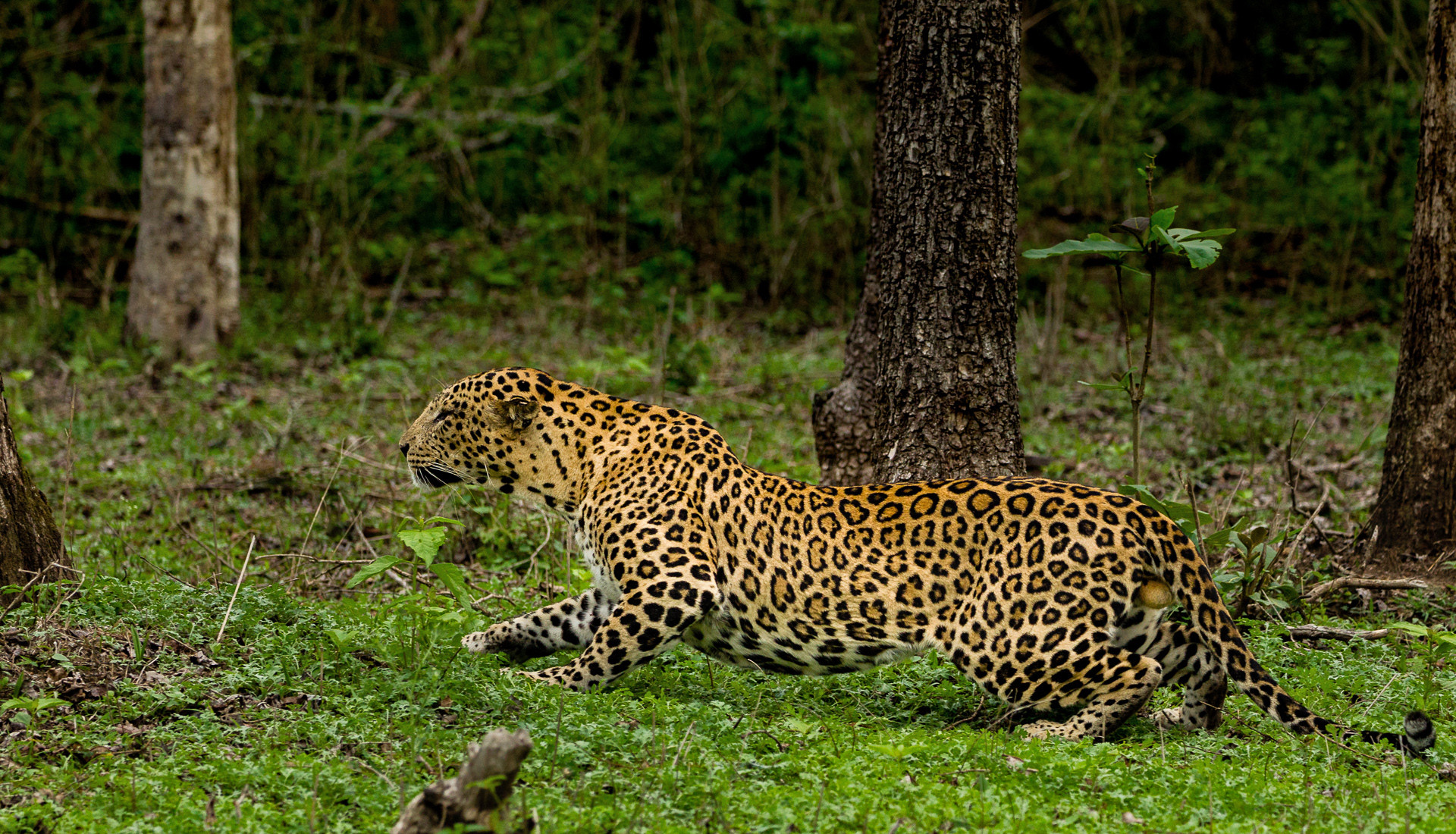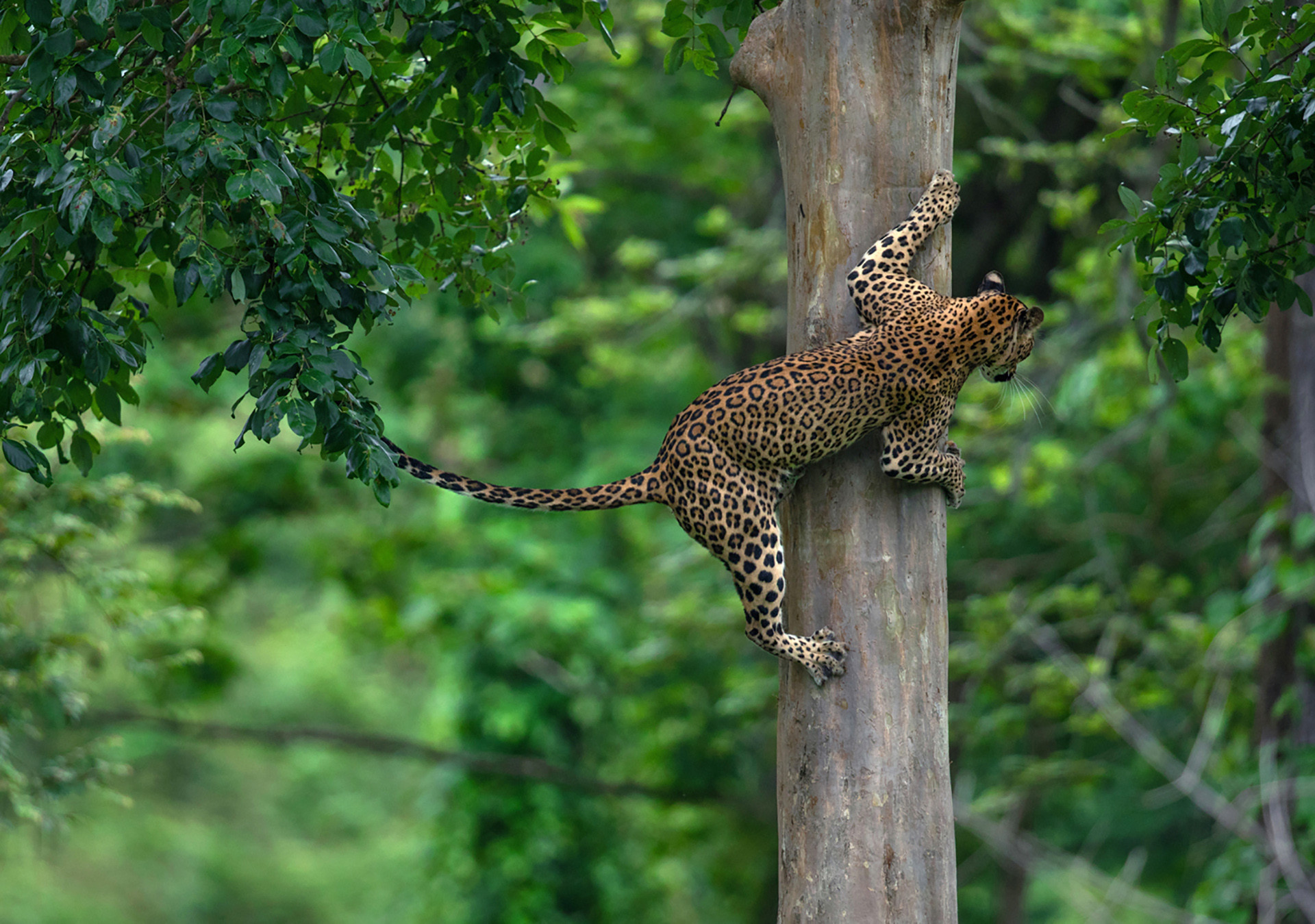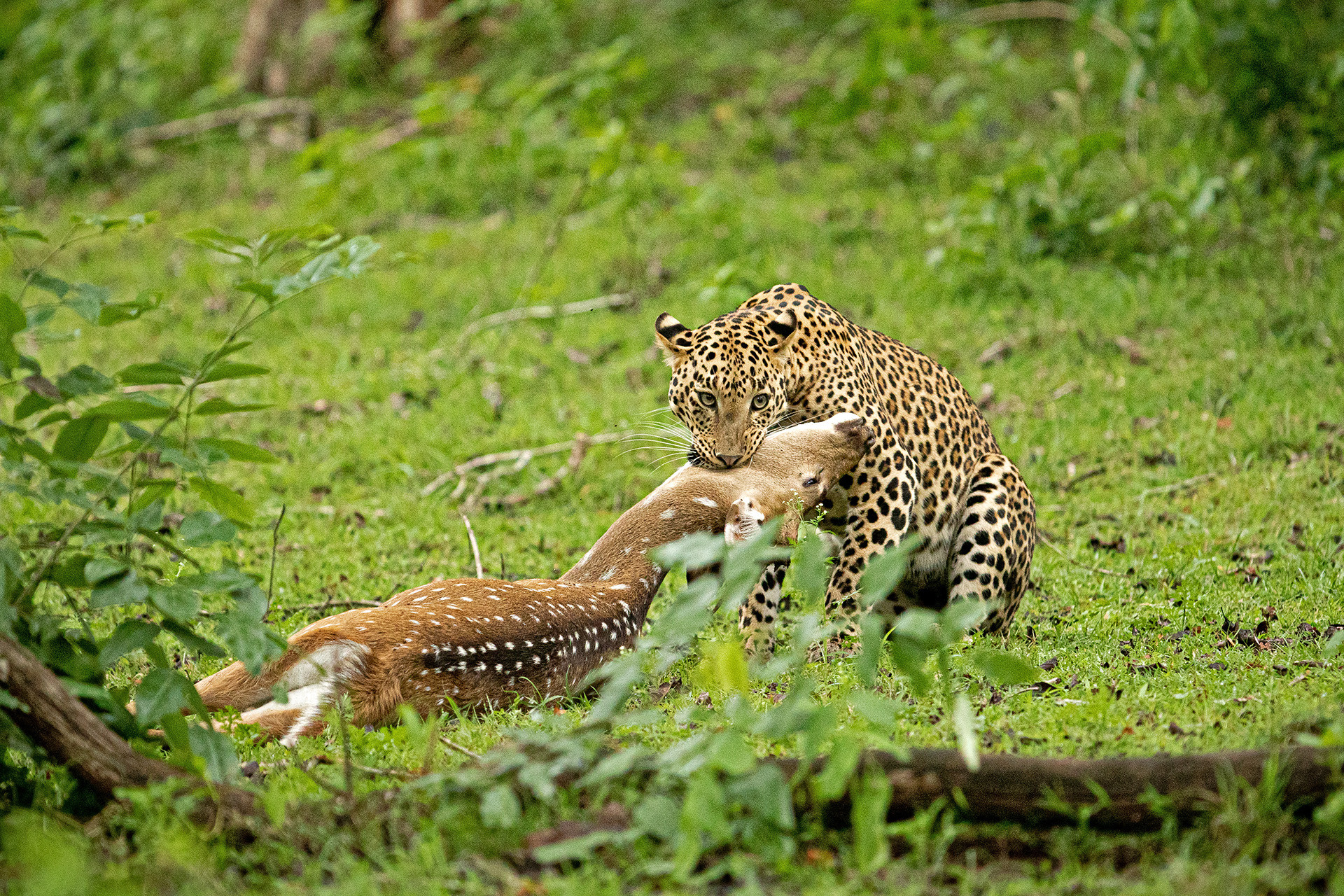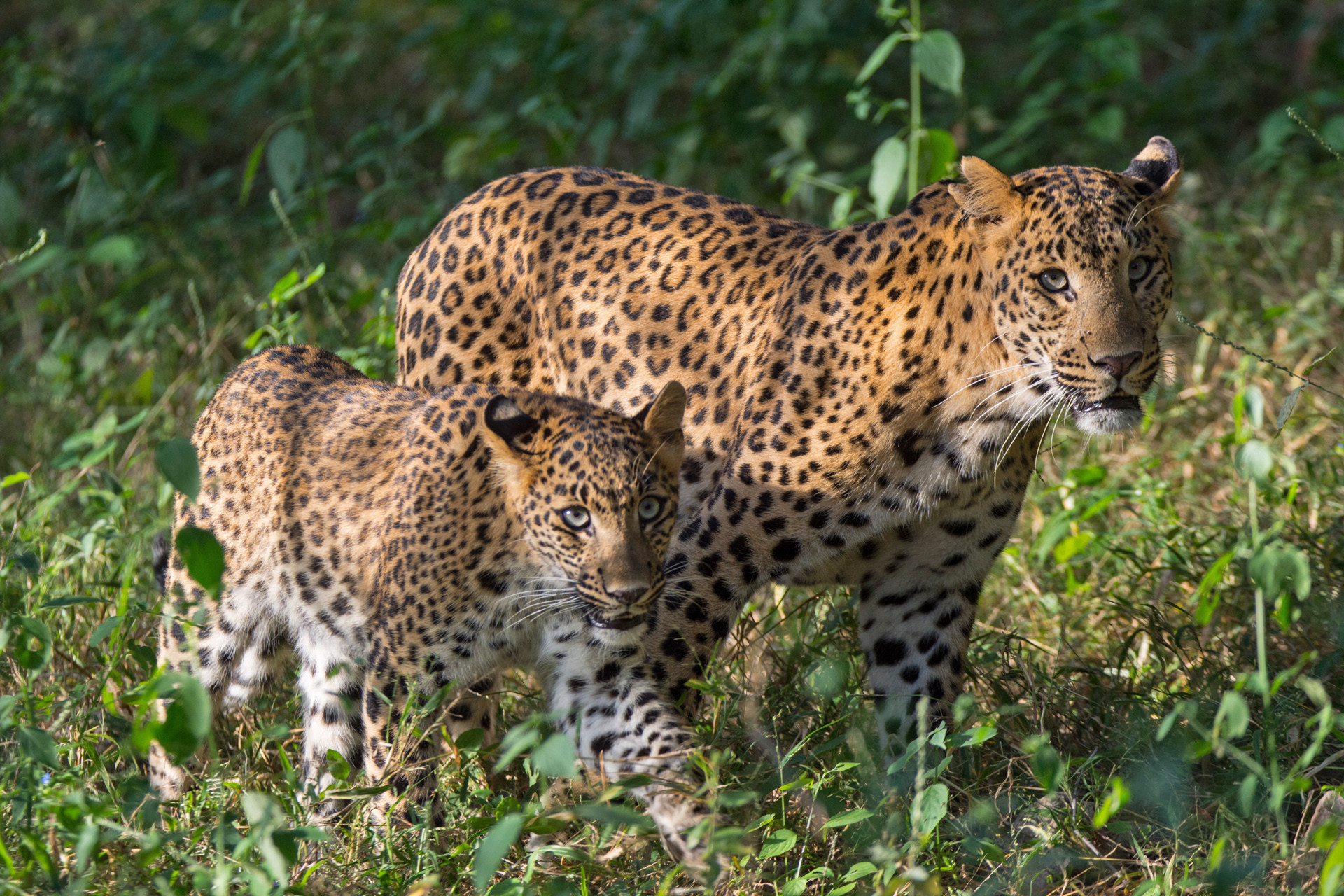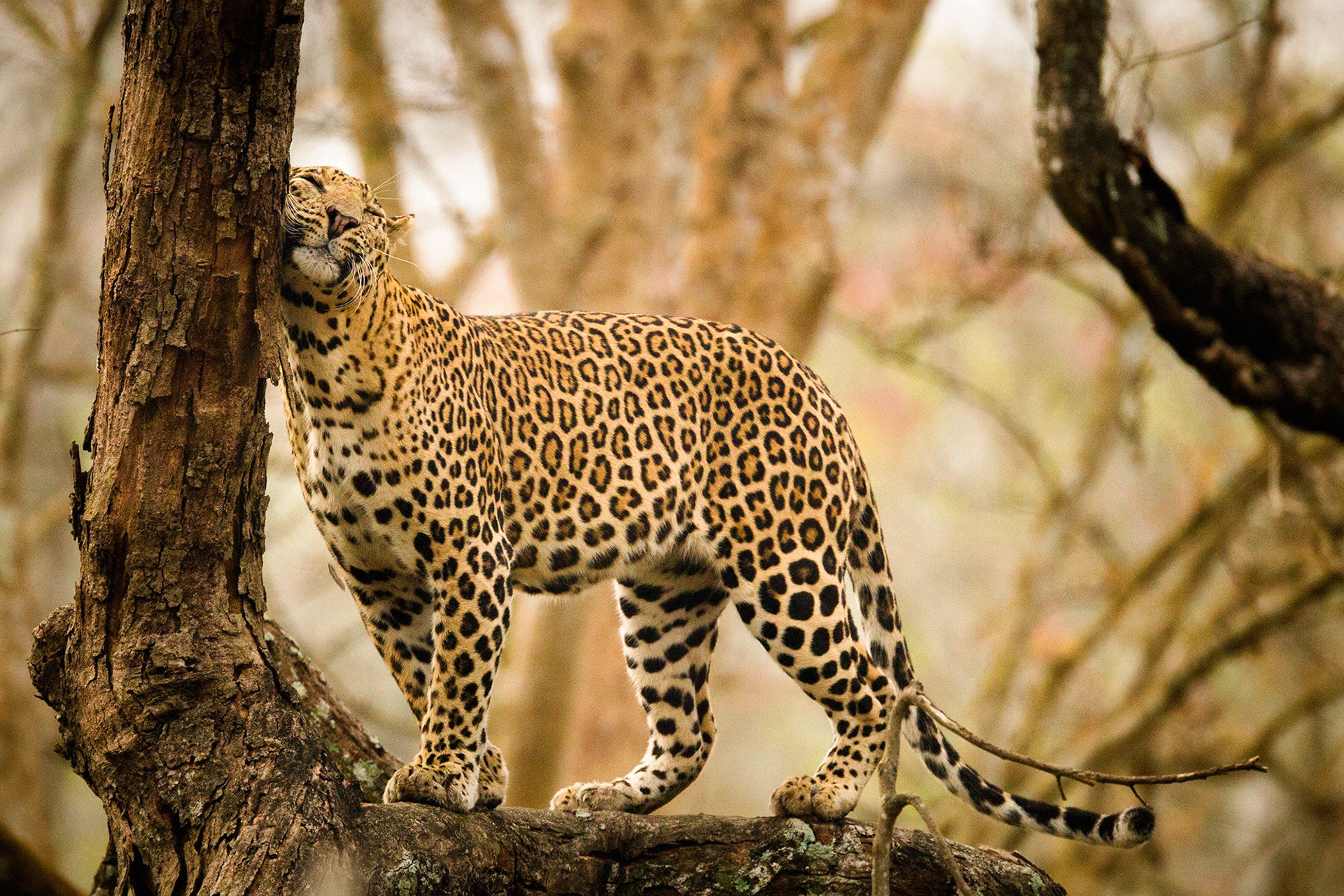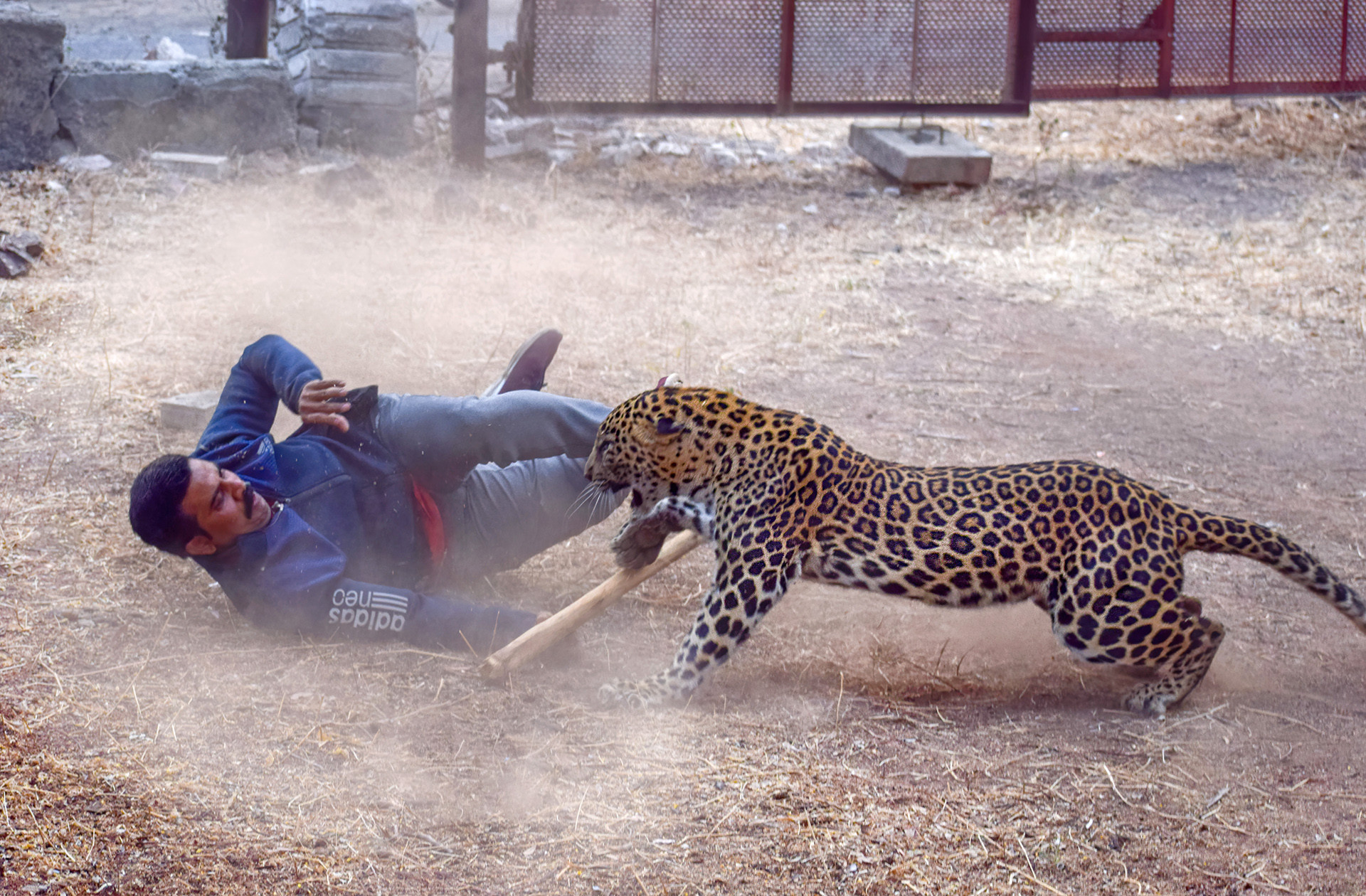Mysterious, agile and elusive, leopards are hard to spot. But when you do set your eyes on one, it is hard to look away. Their spotted coat, piercing eyes, and uncanny ability to scale trees leave people in awe. Yet, leopard populations throughout the world are rapidly decreasing. Despite adapting to a range of habitats, leopards are threatened by various factors. They are losing their preferred habitats to developmental activities and agricultural land, and continue to be poached for their skin and other body parts. Leopard sightings in urban areas seem to have increased in recent times, leading to conflict situations. However, communities fail to understand that these are, in fact, leopard habitats where development has intruded and not the other way around.
Leopards need our help if they are to survive and the first step each of us can take is to learn more about them and to help raise awareness amongst the wider public. Here’s a quick primer on Indian Leopards.
1 – From the Land of Spots and Stripes
Leopards (Panthera pardus) belong to the genus of big cats and are closely related to lions, tigers, and jaguars. They are the smallest members of this family and are divided into nine subspecies, the Indian Leopard (Panthera pardus fusca) being one of them. According to a report released by the Government of India, as of December 2020, there are about 12,852 leopards in India. Leopards adapt to a range of habitats and are found in different types of forests like deciduous, coniferous, evergreen and temperate. They are also seen in tea and coffee plantations, grasslands, scrublands, and are known to reside near human-occupied spaces.
2 – Hiding in Plain Sight
A distinct morphological feature of leopards are the spots or rosettes that are seen on their coats. Compared to the similar-looking jaguars, leopards have smaller rosettes which are placed closer together. The rosettes turn into solid spots on the limbs and face of the animal. These spots aid the leopard in camouflaging well against their habitats. The rosettes are also unique to each animal and act as fingerprints do, in identifying individuals.
3 – View from the Tree-top
Leopards are masterful climbers and usually spend their day hidden among the trees or within caves. Not only are they skilled climbers, they can also jump from one tree to another to navigate their way through the forest or to attack unsuspecting prey. They are capable of hauling their kills, even of large prey, up onto a tree where they then feed on them away from other predators.
4 – Food for Thought
Leopards mainly feed on ungulates like deer, pig, primates and domestic livestock. They are ambush predators and stalk their prey before pouncing on the animal and breaking its neck. They then haul their kill onto a tree or cover the animal in leaf litter. Leopards have also adapted their diets to suit their surroundings. They prey on livestock when close to villages and farmlands - frequent cause for conflict. Additionally, researchers have found that in Mumbai city, leopards frequently prey on feral dogs thereby protecting and increasing the resident wildlife population.
5 – A Vulnerable Birth
Leopard cubs are born blind and almost hairless. Their coats have barely visible spots, which develop over time. They do not leave their dens for the first three months and depend completely on their mothers for food. Leopard mothers also frequently move their cubs around to protect them. At 12-18 months, they are old enough to hunt and take care of themselves.
6 – Not Without a Trace
Being solitary creatures, leopards use territory marking as a means to announce their presence and to communicate with fellow cats. They use their claws to scratch tree trunks or rub their cheeks against trees. The scent glands in their cheeks leave a mark that is detected by other leopards. This way, when a female leopard enters the oestrous phase, territory markings can help the males in the vicinity to locate her.
7 – Peaceful Coexistence
Designated as a Leopard Conservation Zone in 2003, Bera is located in the Aravali Range of Rajasthan and is surrounded by the popular Jawai dam. Home to the nomadic Rabari tribe, Jawai-Bera is not only known for its leopard population but also for the peaceful coexistence between the members of the Rabari tribe and the big cats. As independent filmmaker Shatabdi Chakrabarti shares in her exploration of Bera, despite the close proximity, conflicts have been entirely absent in the region for the last 100-odd years. “In such complicated times, when both man and animal are fighting for their survival, this story of tolerance, respect and peaceful coexistence in Jawai-Bera gives us hope,” writes Chakrabarti.
8 – Urban Wanderers
Once a stretch of lush green forests, Aarey Milk Colony in Mumbai, Maharashtra, has already lost more than 3000 acres due to unplanned developmental projects. The fragmented grasslands, shrublands and water bodies that remain provide a home for many diverse species including leopards which are frequently sighted here. Aarey also acts as a buffer zone for the adjacent Sanjay Gandhi National Park, providing safe corridors for the leopards to move in and out. Through the Save Aarey campaign, community action has ensured that the remaining green patches are protected for its denizens.
9 – The Elusive Cat
The Black Panther is a sight all photographers seek. These melanistic leopards usually inhabit evergreen forests where they can easily hide within the dense vegetation. The dark colour of their skin and fur is due to the overproduction of melanin. The coat's appearance is influenced by various factors, including the angle of light. One can often make out faint rosettes against their dark coats. Leopards with completely black coats are actually not that common.
10 – Saving the Spotted Cat
Leopards were once widespread across Africa, central Asia and China. Sadly, they have now lost about 75 per cent of their range. Leopards are listed as Vulnerable by the IUCN Red List of Threatened Species. In India, human-leopard conflicts, loss of habitat and poaching for illegal trade are some of the biggest threats to the resident leopard populations. As linear intrusion projects cut through their habitats, leopards also lose their lives on roads and railway tracks. Despite the good news of increase in leopard populations across the country, it is essential that their habitats are protected and that communities that share spaces with them are educated and enabled to reduce conflicts.
Looking for more information on leopards?
From Nagzira, Nagarahole, to the outskirts of Bangalore, join our photographers as they share glimpses of leopards in these regions.
In the first four months of 2019, 218 leopard deaths were reported across India due to various reasons, speeding trains being one of them. Learn more about the catastrophic consequences of railway lines cutting through protected areas in our story on speeding trains and the rising wildlife death toll.
Wildlife Photographer Abhiroop Ghosh Dastidar gives you a low-down on Jawai-Bera and on how to plan a trip to the leopard kingdom.
